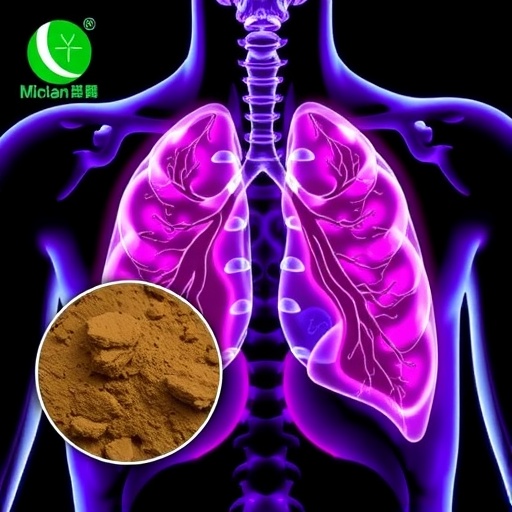Some mushrooms produce long-chain unsaturated carboxylic acids as their chemical defense against insect larvae. The biosynthesis of these polyenes relies on only one enzyme, as German scientists have now discovered. In the journal Angewandte Chemie, they report the unprecedented multiple double-bond-shifting activity by the enzyme, which is representative of a yet uncharacterized phylogenetic clade of polyketide synthases.
Mushrooms feed on dead plant material and thus fulfill an essential role in the carbon cycle. But they themselves are fed on, for example, by insect larvae and many other inhabitants of the forest. To defend themselves, mushrooms and fungi have developed a vast arsenal of chemical weapons. If, for example, the mycelium of a false turkey-tail mushroom is injured by the bite of a larva, polyene compounds are produced that affect the larvae by inhibiting pupation. The biosynthesis of theses polyenes follows a very unique and previously undiscovered pathway, as Dirk Hoffmeister and his team at the Friedrich-Schiller-Universität Jena, Germany, have discovered.
The mushroom, which was named BY1, produces two distinct branched-chain unsaturated carboxylic acids upon injury. Unlike most known polyenes, they BY1 defense polyenes are not composed of the well-known isoprene building blocks, which, for example, form the molecular skeleton of natural rubber. Instead, they have a polyketide body, a common class of secondary natural products, with an array of conjugated double bonds. These double bonds are shifted by one carbon atom with respect to the acetate units, the building blocks of the molecule. It was unknown how biosynthesis manages such a large number of shifts in one molecule.
In BY1, the enzyme responsible for these shifts is one single polyketide synthase (PKS), the scientists have found out. Such enzymes generate a large diversity of natural products in plants and fungi, but the mechanism observed here is unusual. Hoffmeister and his colleagues argue that it was "the first observation of injury-induced PKS gene expression and the unprecedented shift of multiple double bonds, catalyzed by a single PKS." Thus, one single enzyme appears to act as a weapon master.
The scientists identified this enzyme as part of a distinct, yet unexplored phylogenetic clade among the fungal PKS enzymes. To prove this classification, they reconstituted the BY1 PKS gene into the model fungus Aspergillus niger. In consequence, this modified mold produced both of the BY1 polyene carboxylic acids. The authors propose that this defense strategy to build the unusual polyene is a widespread mechanism of mushrooms.
###
About the Author
Dr. Dirk Hoffmeister is Professor of Pharmaceutical Microbiology at the Friedrich-Schiller-Universität and the Leibniz Institute for Natural Product Research and Infection Biology (Hans Knöll Institute), Jena, Germany. His team explores the genetics and biochemistry of the basidiomycete secondary metabolism in order to find new bioactive natural products.
http://www.pharmazie.uni-jena.de/Institut/Pharmazeutische+Mikrobiologie/Prof_+Dr_+Dirk+Hoffmeister.html
Media Contact
Mario Mueller
[email protected]
http://newsroom.wiley.com/
############
Story Source: Materials provided by Scienmag




